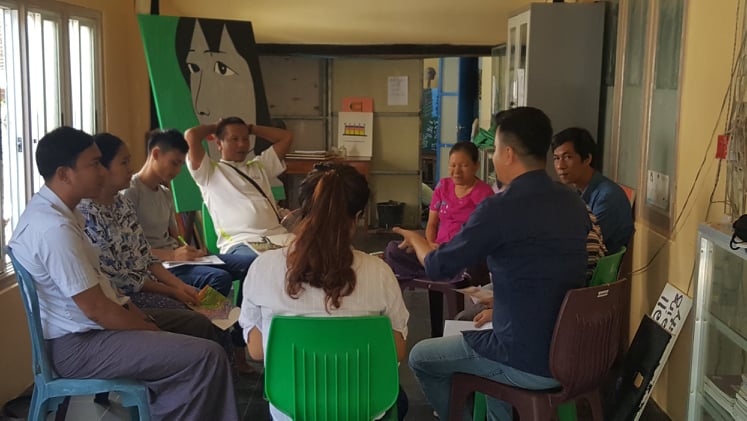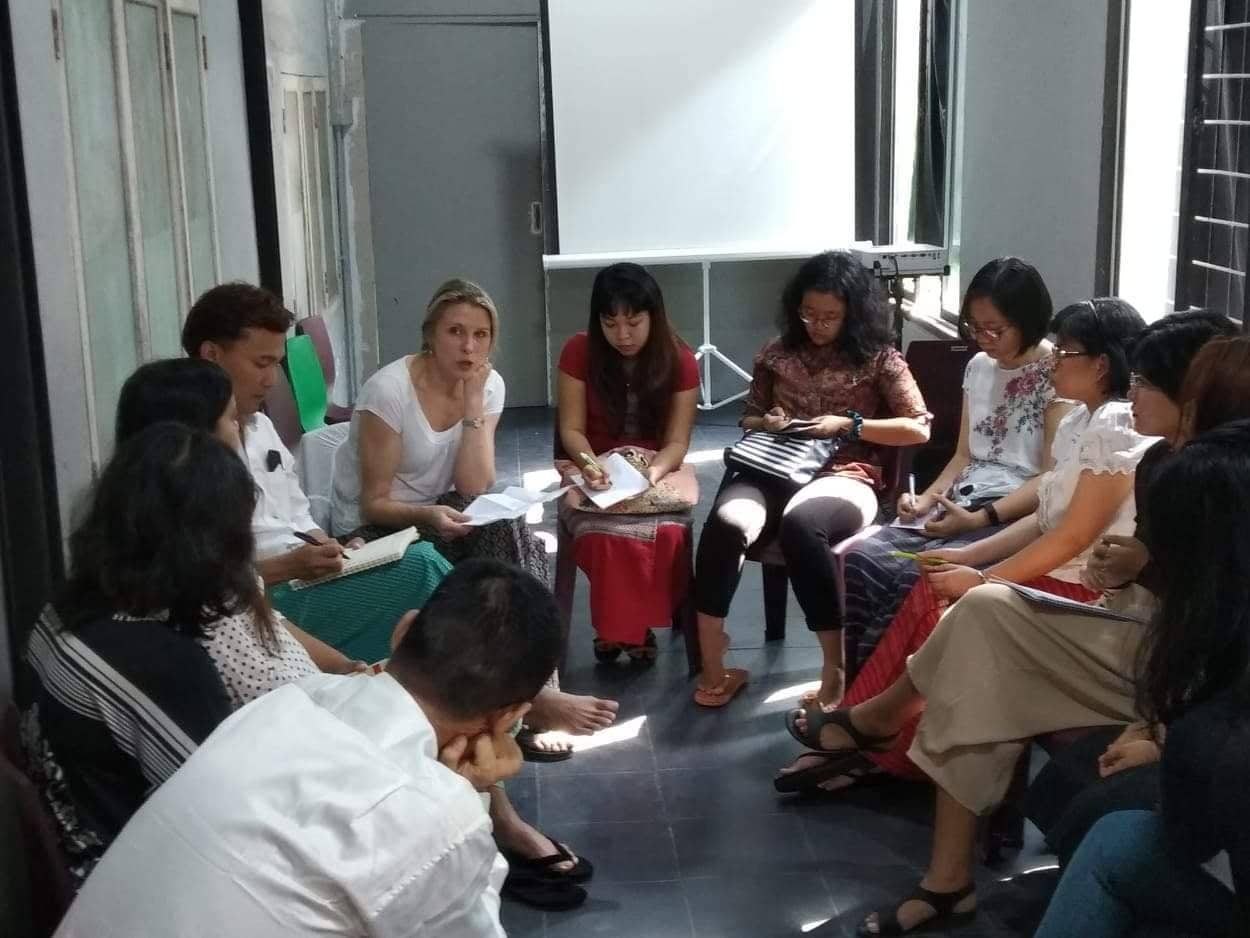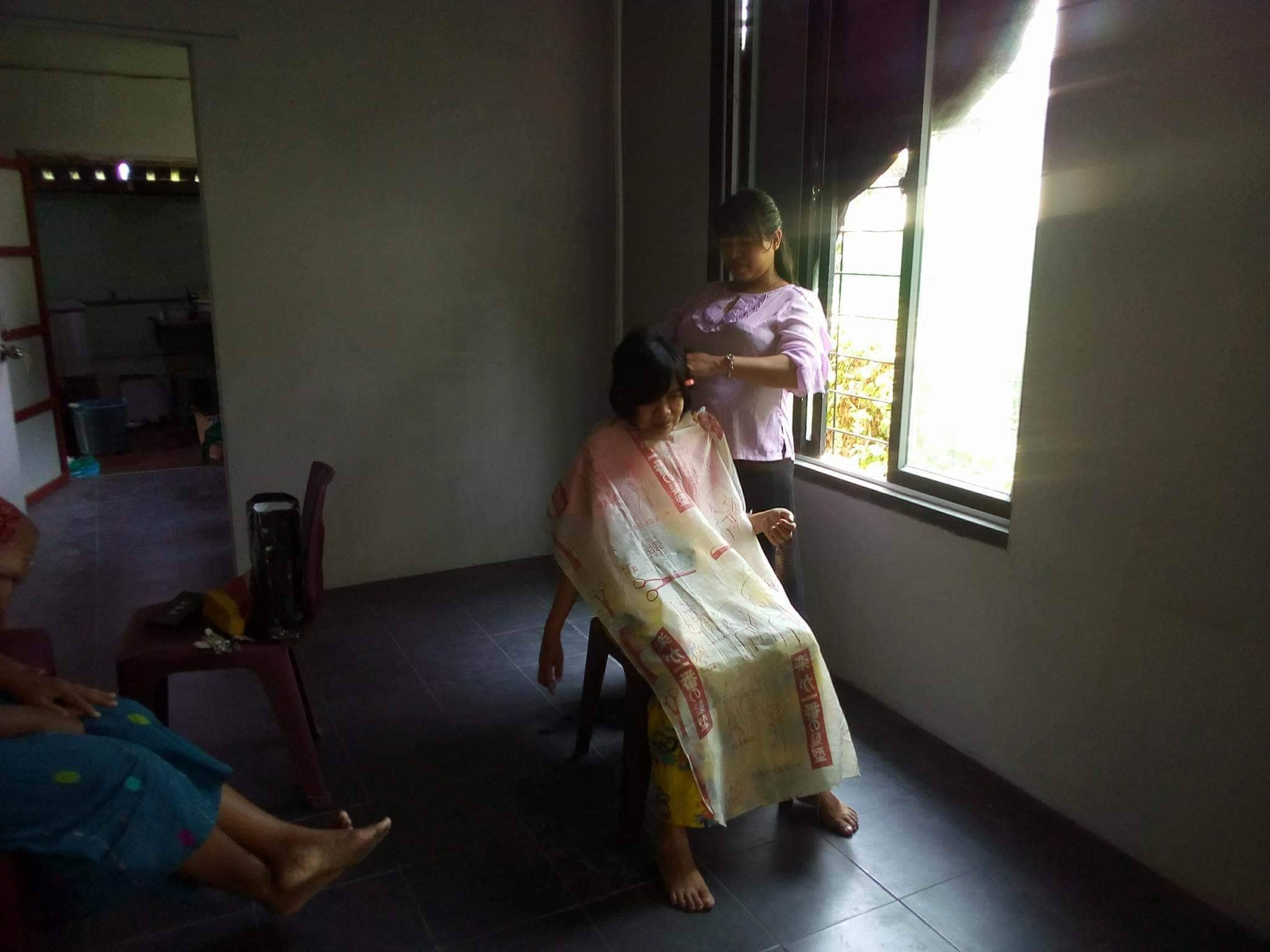Evaluation Report 2020
by Dr Radka Antalikova
Myanmar: Aung Clinic
Evaluation
Since Aung Clinic provides specific, non-standardized interventions to its clients, qualitative rather than quantitative techniques were employed in the evaluation of these interventions. Moreover, in order to facilitate a naturalistic, non-directive context for the clients’ evaluation as well as to “contextualize human phenomena within the personal and social milieu within which it arises” (Powell, Single, & Lloyd, 1996, p. 196), focus group discussion was chosen as a primary method of data collection. Here, supportive atmosphere created by a group of peers was expected to encourage clients to share their opinions and feelings freely and honestly, as they would typically do during regular group therapy sessions at the clinic. On top of that, the focus group method was also assumed to encourage clients to use their own language and concepts, and in this way, help them articulate their own experiences (Wilkinson, 1998). This is because, during this particular kind of evaluation, clients were expected to be talking mostly to each other rather than to the facilitator himself or herself.

Hence, three focus group discussions, with five clients each, were conducted to evaluate the services of Aung Clinic in March 2020. All participants were active clients of the clinic at the time. Moreover, in order to include at least some of the clinic’s former clients in the evaluation, five individual interviews were conducted as well[1]. The participants were recruited based on a number of criteria: a) their consent to participate in the study; b) inclusion of a wide range of mental health problems, such as anxiety, C-PTSD, depression, bipolar disorder, schizophrenia, and intellectual disability with a mental health condition; c) gender inclusion; d) the participants’ availability time-wise and distance-wise (some clients live outside of Yangon). The final sample then included 20 participants in total, 10 women and 10 men, with their age ranging from 17 to 65 years. The majority of participants (13) were Bamar; the other came from ethnic minority backgrounds, such as Chin, Kachin, Karen, Rakhine, and Palaung.
[1] The interview method was here chosen due to the limitations in these participants’ availability.
Both group discussions and individual interviews took place at the clinic and were led by an external counselor with extensive facilitation experience in the mental health context. One of the clinic’s interns, currently in the third year of her Master degree studies in psychiatry, was also present in order to take notes. The questions asked during the discussions and interviews were largely the same, with the biggest difference being that the former also incorporated clients’ reflection on their own paintings as one of ways to facilitate discussion. More specifically, the clients were here asked to compare one of their first paintings made at the clinic to a very recent painting.
Whether taking part in a group discussion or an individual interview, all participants agreed that coming to the clinic has had a significant, positive impact on their life. The most frequently mentioned improvement was with respect to their emotion regulation. The clients felt that they have become much better at controlling their emotions and that their mind was in general calmer than before. At the same time, most of the clients reported substantial symptom reduction. Some participants stopped hearing voices, having recurring thoughts; others became less depressive or paranoid. A couple of clients mentioned having found more meaning in life thanks to the clinic’s services. For instance, a former male client with a history of severe depression and suicidal thoughts said: “I thought I would be better dead. I thought I would not be able to live anymore. Now I do not think about death anymore”. One participant mentioned having a better memory, while another has been abstinent from alcohol for more than a year.
Consequently, the above-mentioned betterments seemed to have led to a decrease in the clients’ maladaptive behaviors, which in turn has improved their overall social functioning. One of the clinic’s former clients, a female suffering from a bipolar disorder with a comorbid C-PTSD, stated: “I used to lie in bed all the time and ignore my family members. Now I socialize with them”. Many clients specifically mentioned that their respective families feel less pressure now that they have stopped, for instance, running away from home or being physically aggressive. A female client previously treated for emotional dysregulation said: “I fought with my sons before and then I ran away from home. Now it does not happen anymore, because I can control myself”. A lot of these families seem to be experiencing more mutual acceptance and understanding, which could be a sign of the respective clients’ heightened self-acceptance and -understanding. One participant in the third focus group discussion, suffering from hallucinations, stated: “Maybe they [my family] were also afraid of me before, as I was afraid of them; but now they do not treat me any different. They care about me”.
In addition, a number of clients reported having had less fights with neighbors due to their changed behavior. The participants in the first focus group discussion also highlighted caring less about what other people think, and especially about the stigma they experience in their daily life. When it comes to work and employment, since most of the clinic’s current clients do not have stable jobs, an overwhelming number of them mentioned that they have been able to help with chores at home much more as the main difference in this area of life. However, one current client who is a barber said he feels fresher to go to work every day, while another has managed to open a grocery shop.
When asked which of the clinic’s services they liked the most, group therapy and art therapy were clear favorites among both current and former clients. On one hand, group therapy was described as a place of acceptance and warmth:
I like talking with my peer patients. We do not talk about the past, we do not talk about the future; we talk about the present. Sometimes, the way we talk may seem out of order or funny to other people, but nobody gets blamed here. We are warm to each other like sisters and brothers (participant in the second group discussion).
On the other hand, the clients praised the clinic’s art therapy sessions for creating a safe space for their self-expression. This is because there are neither rules to how and what they paint, nor grades for or analysis of the result. Drawing feels simply to them like freedom. On top of that, improving themselves at painting has also empowered them, as one of the participants in the first group discussion expressed: “I believe that if I could master art, I might as well master other aspects of life”. When asked to compare one of their first paintings made at the clinic to a very recent painting, all clients found the more recent paintings to be better, both in terms of technique and their feelings when looking at the painting. The participants in the first group discussion agreed that this was because their minds were clearer, more concentrated, and more at ease when creating the images they wanted; they also felt happiness when doing so. A participant in the second group discussion expressed: “I can see my state of mind by looking at my paintings”.
Finally, an interesting finding was that one former female client, treated for C-PTSD with a comorbid depression and social phobia and with a family that had previously been unable to support her with respect to her mental health issues, has been able to apply what she had learned at the clinic at home: “Sometimes, we [my family] sit around like in group therapy, and we talk about what is inside our hearts. We appreciate each other”.
Aung Clinic
Dr. San San Oo
Dr. Aung Min
Call:
+95 9 262550937
+95 9 254063341
+95 9 267034148
Working Hours
Monday-Friday
9 am – 5 pm.


